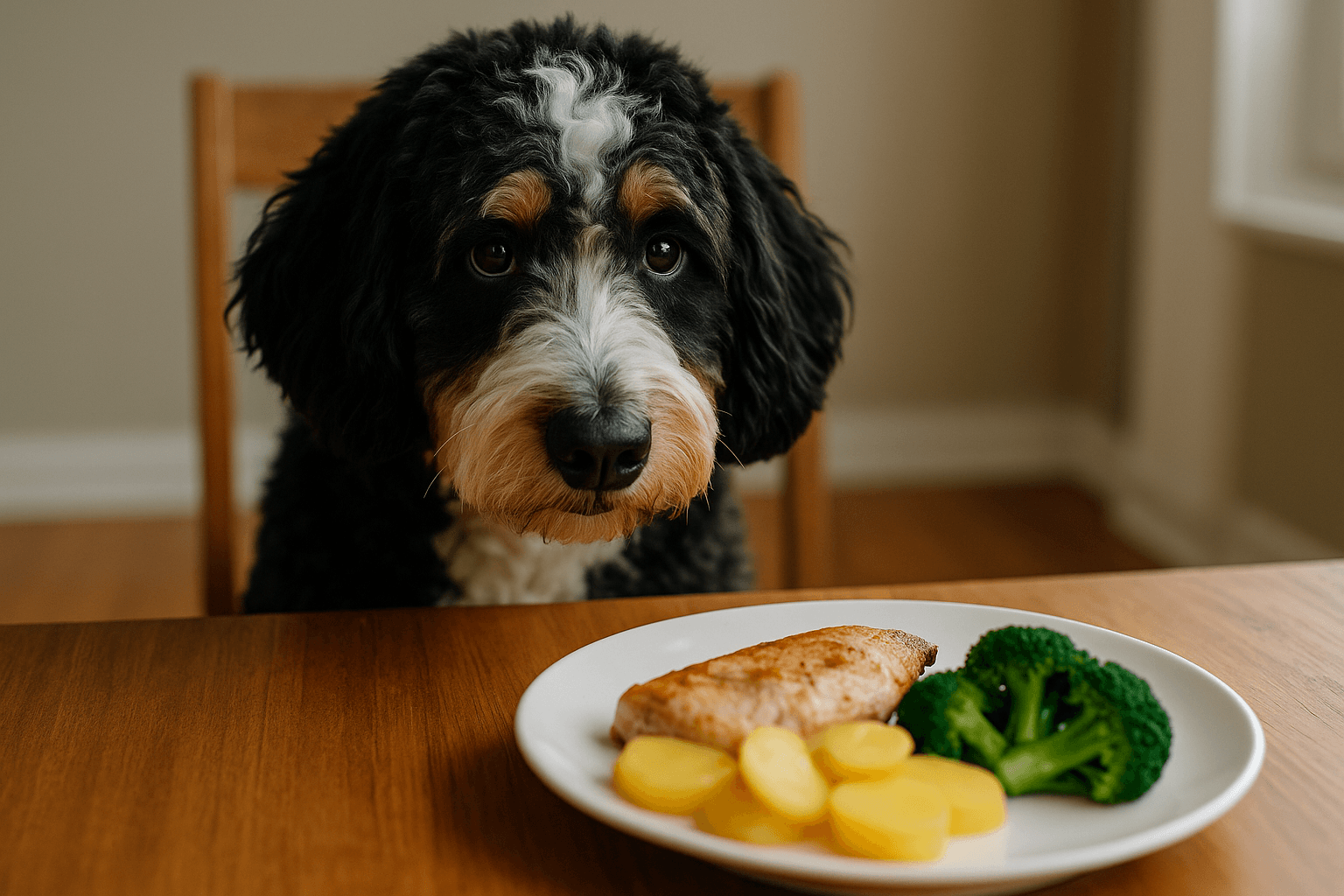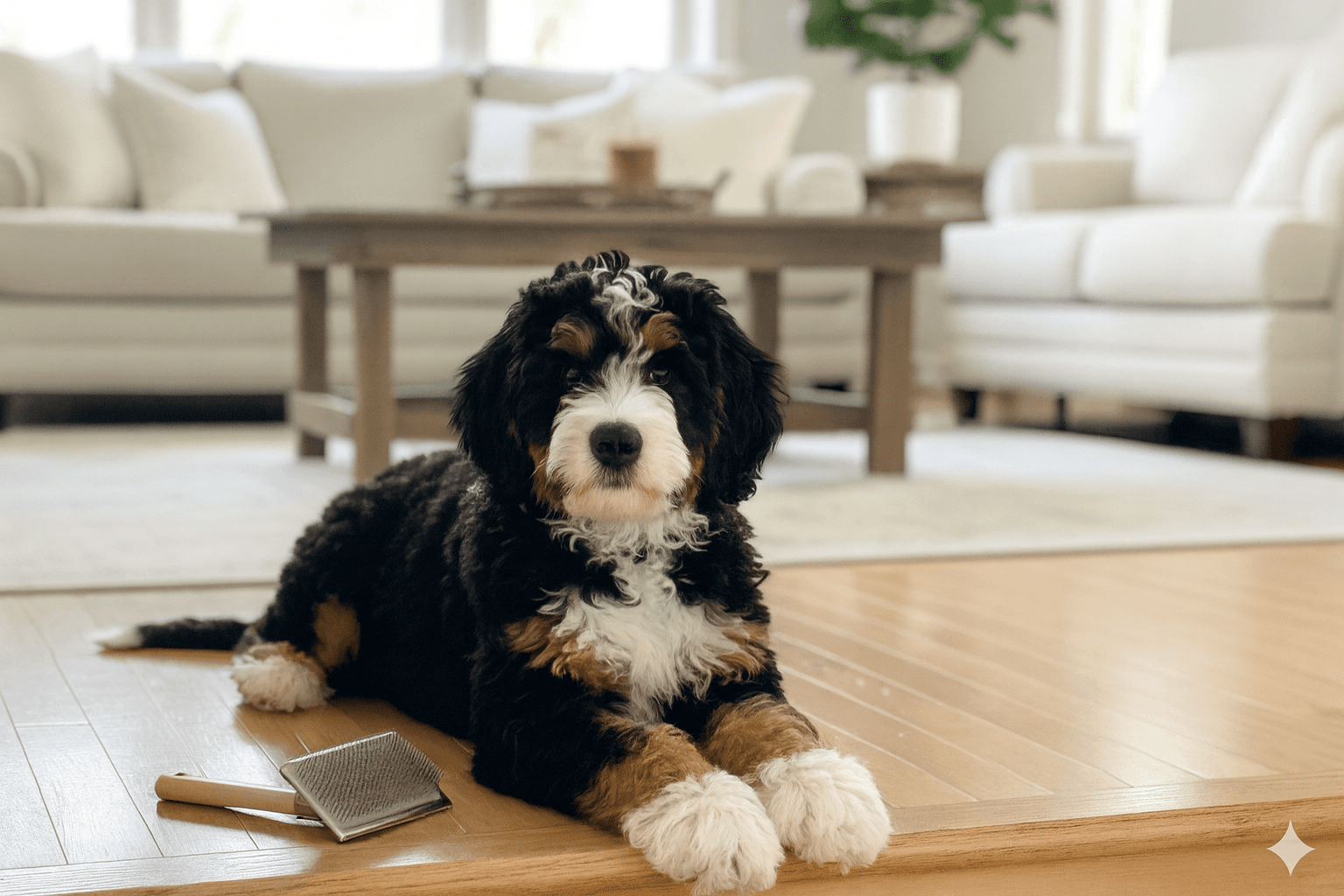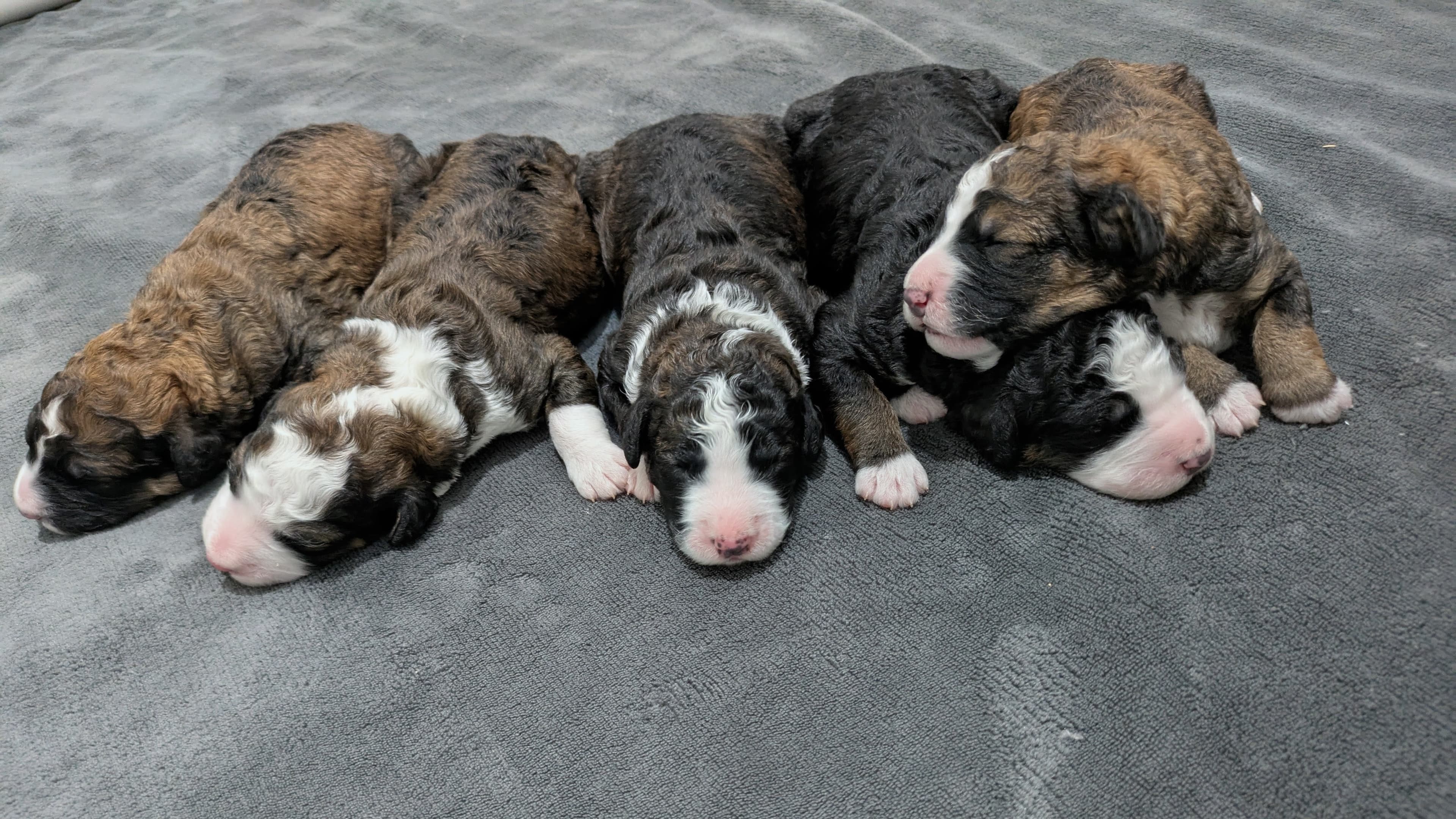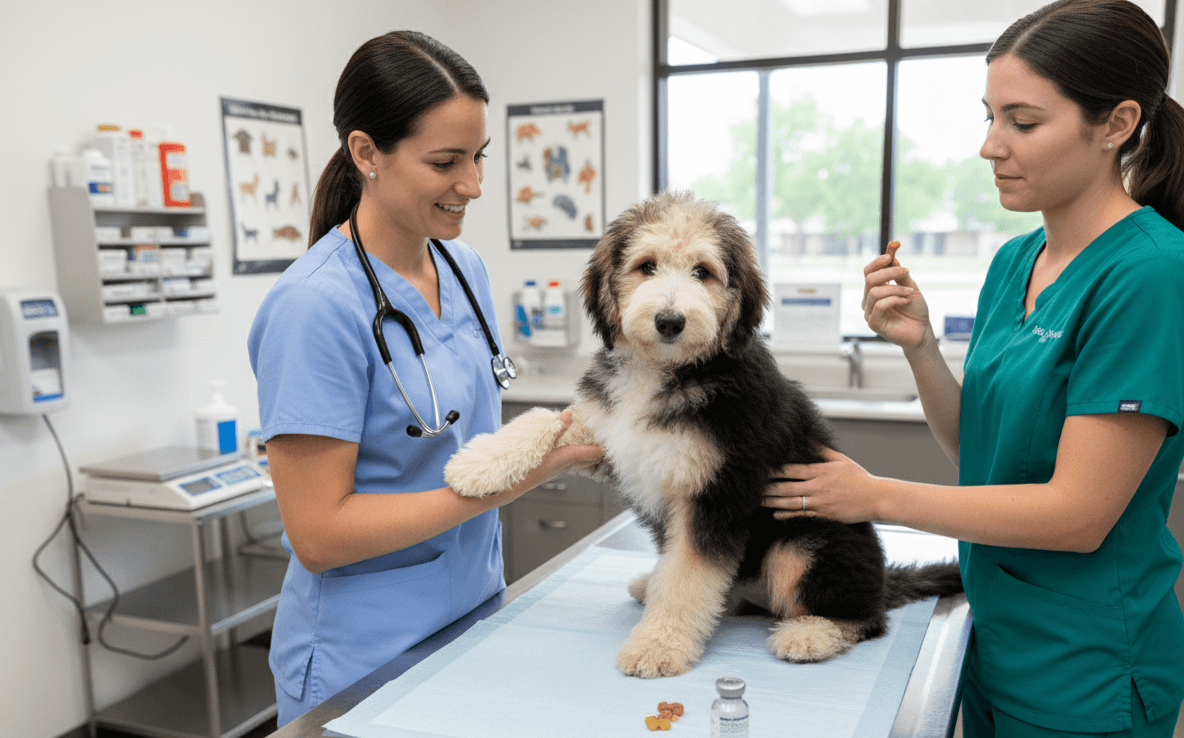
Table Scraps: The Good, the Bad, and the Dangerous
By Harpers Ferry Doodles · 8/8/2025 · 🕒 3 min read
Who can resist those puppy dog eyes at the dinner table? Let’s be honest—if you had to eat the same kibble every day, you’d be begging for a bite of something new too. Sharing a little food with your dog is almost inevitable, so it’s important to know what’s safe, what’s not, and how to do it responsibly.
The Good: Safe and healthy table food for dogs
Not all table food is bad for your dog—in fact, some can be a healthy addition to their diet when shared in moderation. A little variety can provide extra nutrients and enrichment, especially when it comes from whole, unprocessed ingredients. Fresh lean meats and cooked vegetables are packed with vitamins, minerals, and protein that support your dog’s overall health. Just be sure to avoid added seasonings, oils, or sauces, which can upset your dog’s stomach or add unnecessary fat and sodium.
Here are some dog-safe table foods to consider:
Lean meats (unseasoned chicken, turkey, beef)
Cooked vegetables (carrots, green beans, sweet potatoes)
Plain grains (rice or oatmeal)
Eggs (cooked or raw)
Small amounts of plain cheese or yogurt
Dog-safe fruits (blueberries, bananas, and apples)
Sardines (great source of omega-3s—look for those packed in water, not oil)
The Bad: Foods that can upset your dog’s stomach
Some table foods aren’t toxic, but they’re still not great for your dog. These items can lead to digestive issues, weight gain, or bad habits if shared too often. High-fat, heavily seasoned, or processed foods might taste good to us, but they can be too rich for your dog’s system. Even “harmless” leftovers can cause problems over time if they’re salty, greasy, or overly starchy.
Here are common table foods to limit or avoid:
Fatty meats like bacon, sausage, or steak trimmings
Cooked bones, which can splinter and cause internal injury
Cheese and bread in large amounts—hard to digest and easy to overfeed
Leftovers with sauces, butter, or spices
Sugary snacks and desserts (including ice cream and baked goods)
Fried foods or anything heavily processed
Feeding these foods occasionally might not cause immediate harm, but over time they can lead to pancreatitis, obesity, or digestive trouble. It’s best to skip them altogether or offer only tiny portions on rare occasions.
The Dangerous: Foods that are toxic to dogs
Some human foods aren’t just unhealthy—they’re downright dangerous for dogs. Even a small amount of certain items can cause serious health problems or be life-threatening. Every dog reacts differently, but it’s safest to avoid these entirely. If your dog accidentally eats any of the foods below, contact your vet or a pet poison hotline right away.
Here are some of the most toxic foods for dogs:
Grapes and raisins – can cause sudden kidney failure
Onions and garlic – damage red blood cells and lead to anemia
Chocolate – contains theobromine, which is toxic to dogs
Xylitol (found in sugar-free gum, candy, and baked goods) – causes insulin spikes and liver failure
Macadamia nuts – can cause tremors, vomiting, and weakness
Alcohol and caffeine – dangerous even in small amounts
These aren’t foods to take lightly—even a few bites can be dangerous. Keep them out of reach, and remind kids and guests not to share these with your dog, no matter how cute the begging eyes may be.
Tips for responsible table feeding
When it comes to sharing table food with your dog, portion size is key. Even healthy foods can cause weight gain or digestive issues if overfed. Remember, commercial dog foods are carefully balanced to provide all the nutrients your dog needs—scraps should never replace their regular meals.
It’s also important to avoid encouraging unwanted behaviors. Giving food straight from the table can quickly lead to begging, whining, or your dog staring you down at every meal. To prevent this, only offer table food in your dog’s bowl or from a designated spot away from the table.
When used wisely, good table scraps can make excellent high-value rewards during training—especially when working on new or challenging skills. Just keep it intentional and consistent.
Sharing food with your dog can be a fun and rewarding way to bond—but it has to be done with care. By knowing which table scraps are safe, which ones to limit, and which to avoid completely, you can treat your dog without risking their health. A little knowledge goes a long way toward keeping your pup both happy and healthy.
Keep Reading

Oct 7, 2025
How to Keep Your Bernedoodle’s Coat Tangle-Free Between Groomer Visits
Keep your Bernedoodle’s coat tangle-free between grooms with the right tools, simple brushing techniques, and an easy routine.

Sep 25, 2025
Giving Puppies the Best Start: ENS and ESI Explained
We use Early Neurological Stimulation (ENS) and Early Scent Introduction (ESI) to give our puppies a stronger start in life—building healthier bodies, sharper minds, and confident temperaments.

Sep 5, 2025
Vaccination & Vet Care Checklist for Your Puppy’s First Year
A month-by-month guide to your puppy’s first year of veterinary care — including vaccines, deworming, and preventive health tips to set them up for a lifetime of wellness.